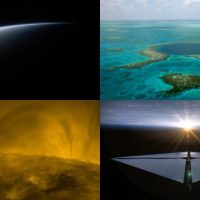From over 100 miles above the surface, a NASA satellite spotted dry ice and gullies inside a Martian crater.
It gets quite chilly on Mars during its winter — NASA’s rovers contend with temperatures of -140 degrees Fahrenheit, though it gets much colder at the poles — allowing carbon dioxide in the atmosphere to condense into dry ice.
In this image, wintertime CO2 frost is found closer to the equator, where it’s usually a bit too “warm” for dry ice to exist. Yet inside parts of the crater that receive less sunlight, frost has formed.
But that’s not all. Also visible is another curious sight on Mars: gullies. These are channels or trenches cut into the surface. The CO2 frost can act like a fluid and flow in, or form, gullies.
Tweet may have been deleted
Why landing a spaceship on the moon is still so challenging
-
Compelling Mars photo shows Martian water flowed way more recently than we think
-
The mega-comet hurtling through our solar system is 85, yes 85, miles wide
-
Private astronaut brings an item of mythic proportions to space station
Mars contains some water ice, too. In the planet’s frigid Korolev crater, ice brims inside this deep basin year-round.
Planetary scientists have found evidence that water once flowed on Mars, perhaps as “recently” as 2 billion years ago. And perhaps some 4 billion years ago, it’s possible Mars was even a largely blue world, with enough water to cover large swathes of the planet.
Today, the planet’s surface is a harsh, dusty desert. NASA’s robotic rovers are now sleuthing this arid world for any signs of primitive, past life.








